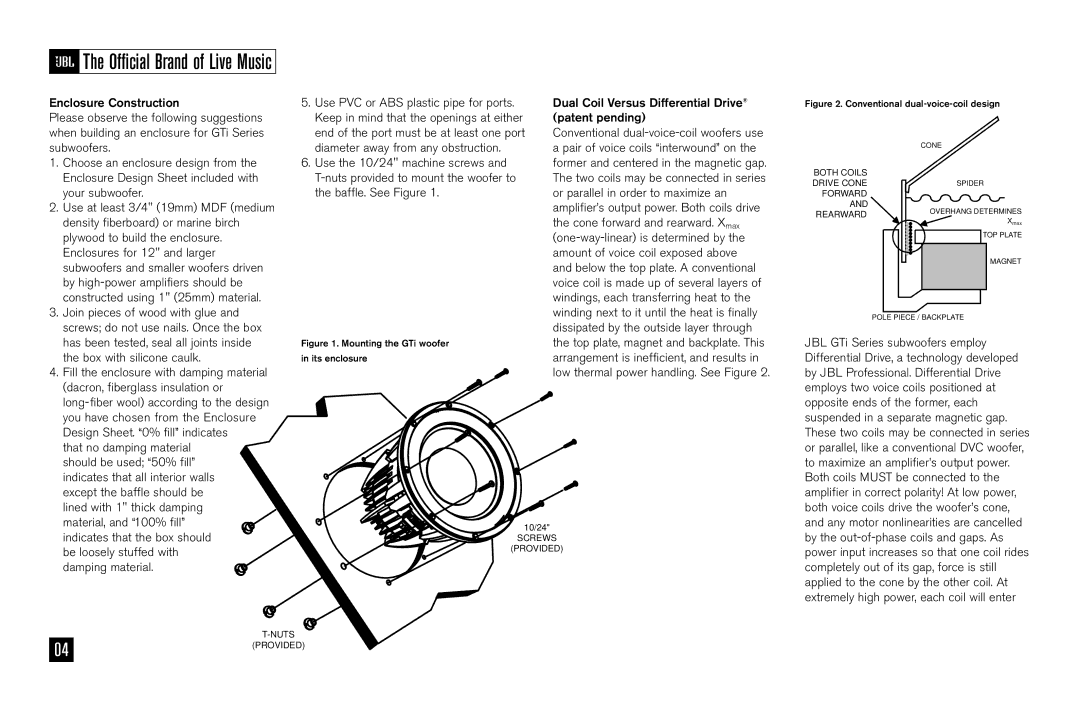W12GTi, W10GTi, W15GTi specifications
JBL has long been a name synonymous with high-quality audio equipment, and their GTi series of subwoofers—specifically the W15GTi, W10GTi, and W12GTi—are standout examples of their commitment to performance and innovation. Each model in this lineup is designed to deliver deep, accurate bass, making them ideal for serious audiophiles and car audio enthusiasts.The JBL W15GTi is the largest subwoofer in the series, featuring a massive 15-inch cone. This model is engineered to handle substantial power, boasting RMS ratings up to 2,500 watts, with peak power capabilities reaching 10,000 watts. The W15GTi utilizes a fiberglass reinforced cone for enhanced rigidity and reduced distortion, combined with a large, vented pole piece that allows for better heat dissipation. This innovative design not only increases the subwoofer's longevity but also ensures that it performs optimally even during extended use.
Moving to the W12GTi, the 12-inch variant, we see a balance of size and power. It supports an RMS power handling of 1,500 watts and can peak at up to 6,000 watts. The W12GTi incorporates an advanced suspension system that includes a progressive-roll surround for improved excursion and a cast-aluminum basket that reduces unwanted resonance. This model is ideal for those who want impactful bass without excessive weight, making it easier to install in a variety of vehicles.
Finally, the W10GTi rounds out the series with its compact 10-inch size. Despite being the smallest of the trio, the W10GTi does not compromise on performance. It has an RMS rating of 1,200 watts and peak power handling up to 4,800 watts. Its lightweight design, paired with JBL’s signature low-frequency extension technology, produces a rich and dynamic bass response that enhances any audio experience. The W10GTi is particularly suited for smaller cars or for those looking to maximize space without sacrificing sound quality.
All three models feature advanced technologies such as JBL's patented Vented Spider, which provides linear movement and allows for greater excursion, and a dual voice coil configuration that enhances their versatility in different setups. Constructed with high-quality materials and precise engineering, the W15GTi, W12GTi, and W10GTi subwoofers offer unmatched audio fidelity, deep bass, and reliability, making them a popular choice for those seeking high-performance audio solutions. Whether you’re aiming for a thumping low-end experience or precise sound reproduction, JBL’s GTi series has a model tailored for your needs.

